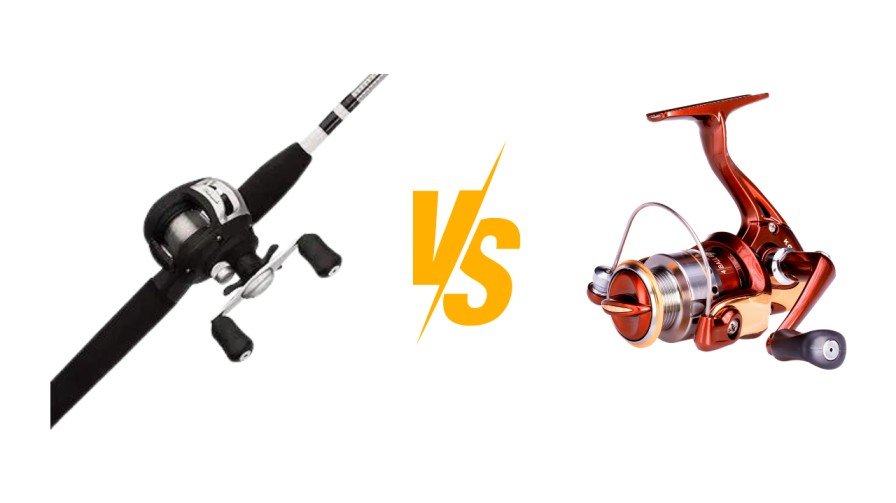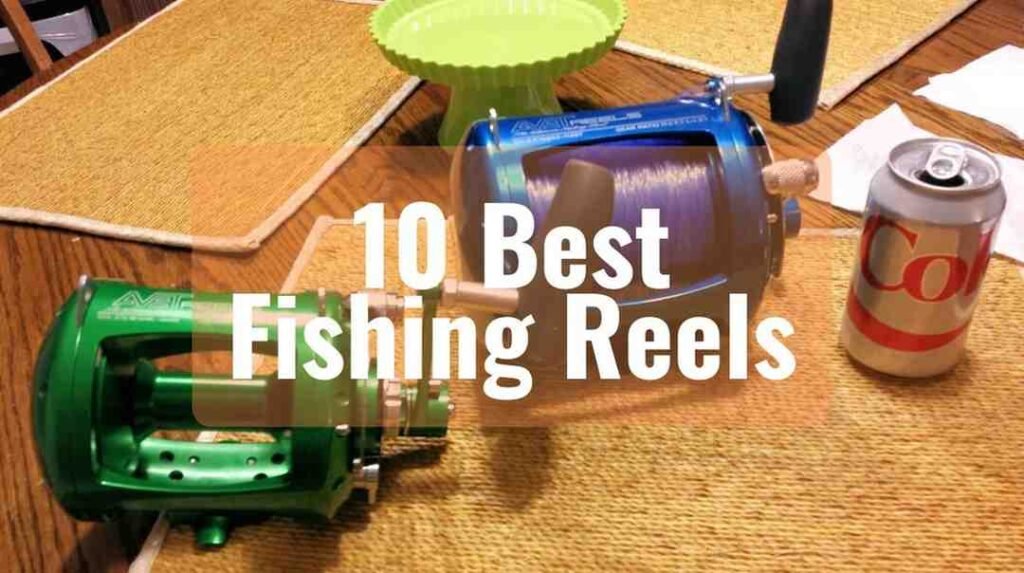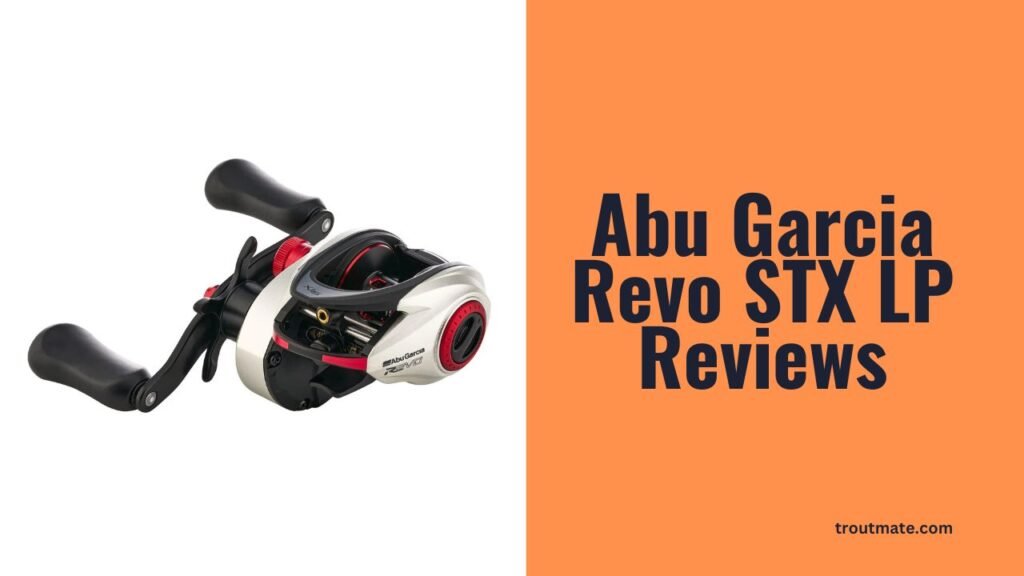Baitcasters offer precision and power, ideal for experienced anglers. Spinning reels are versatile and user-friendly, perfect for beginners.
Choosing between a baitcaster and a spinning reel depends on your fishing style and experience level. Baitcasters provide better control and accuracy, making them suitable for targeting specific fish species and casting heavier lures. They are favored by experienced anglers who seek precision.
Spinning reels, on the other hand, are easier to use and more versatile, catering to a broad range of fishing techniques and environments. They are perfect for beginners and those looking for a hassle-free fishing experience. Understanding the strengths of each reel type helps in making an informed decision that aligns with your fishing goals.
Baitcaster Reels
When choosing a fishing reel, many anglers debate between Baitcaster Reels and Spinning Reels. Baitcaster reels offer specific advantages that make them a popular choice among experienced anglers.
Design And Mechanics
Baitcaster reels have a unique design. The spool rotates as you cast, which allows for greater control. This design helps achieve longer and more accurate casts.
The mechanics of a baitcaster include a braking system. This controls the speed of the spool to prevent backlash. They also feature a drag system, which helps in controlling the tension.
Advantages
- Accuracy: Baitcasters provide precise casting.
- Control: You have better control over the lure.
- Power: These reels handle heavier lines and lures.
- Durability: They are often more durable.
Disadvantages
- Learning Curve: Baitcasters require practice to master.
- Backlash: Incorrect casting can cause line tangles.
- Cost: Baitcasters are generally more expensive.
- Maintenance: They need regular maintenance to perform well.
| Feature | Baitcaster Reel |
| Accuracy | High |
| Control | High |
| Power | High |
| Durability | High |
| Learning Curve | Steep |
| Backlash Risk | High |
| Cost | High |
| Maintenance | Regular |
Spinning Reels
Spinning reels are popular among anglers. They are easy to use and versatile. Many beginners and experienced fishers love them. Let’s dive into the specifics of spinning reels.
Design And Mechanics
Spinning reels have a simple and efficient design. The spool is fixed in place, and the line winds around it as you turn the handle. The reel hangs below the rod, providing balance. This design helps prevent line tangles and bird nests.
| Component | Description |
| Spool | Holds the fishing line |
| Handle | Used to retrieve the line |
| Bail | Guides the line onto the spool |
Advantages
- Ease of Use: Spinning reels are easy to cast, even for beginners.
- Versatility: Suitable for various fishing techniques and environments.
- Less Tangling: The design reduces the chances of line tangles.
- Affordability: Generally more affordable than baitcasters.
Disadvantages
- Less Power: Not suitable for very heavy lines or big fish.
- Slower Retrieval: The gear ratio is usually lower, making it slower.
- Wind Knots: The line can twist, creating wind knots in windy conditions.
Performance Comparison
Choosing between a baitcaster and a spinning reel can be challenging. Each type offers unique performance characteristics. This section breaks down three key aspects: casting distance, accuracy, and handling different lures.
Casting Distance
Baitcasters generally cast farther than spinning reels. Their design allows for less line friction. This results in longer casts. Baitcasters are ideal for fishing in open waters. They can reach fish that are farther away.
On the other hand, spinning reels are easier to cast for beginners. They offer consistent casting distances. Spinning reels are great for short to medium distances. They work well in tight spaces like docks and riverbanks.
Accuracy
When it comes to accuracy, baitcasters have an edge. Their design allows for better control. You can place your lure exactly where you want it. This is crucial for targeting specific fish in dense cover.
Spinning reels are also accurate but require more skill. They are easier to use for beginners. With practice, you can achieve good accuracy with a spinning reel. They are less likely to cause line tangles.
Credit: www.saltstrong.com
Handling Different Lures
Both reels handle different lures but excel in specific types. Baitcasters are great for heavier lures. They can handle jigs, crankbaits, and spinnerbaits. This makes them versatile for various fishing techniques.
Spinning reels excel with lighter lures. They are perfect for soft plastics and light jigs. Their design allows for smooth casting of lightweight lures. This makes them ideal for finesse fishing.
| Feature | Baitcaster | Spinning Reel |
| Casting Distance | Longer casts | Consistent, shorter casts |
| Accuracy | High control | Good for beginners |
| Handling Different Lures | Heavier lures | Lighter lures |
Skill Level And Learning Curve
Understanding the skill level and learning curve is key when choosing between a baitcaster and spinning reel. Different reels suit different anglers based on their experience. Let’s explore how each reel performs in terms of ease of use, learning time, and common mistakes.
Ease Of Use
A spinning reel is easier for beginners. It’s simple and intuitive. Anglers can cast without much practice. The design is user-friendly. The line rarely tangles.
A baitcaster reel requires more skill. It offers better control but needs practice. Beginners may find it tricky. The spool must be managed with your thumb. This prevents backlash and tangles.
Learning Time
Learning a spinning reel takes less time. Most people get the hang of it quickly. It’s great for kids and beginners. The learning curve is short and sweet.
Mastering a baitcaster takes longer. It involves more technique. Anglers need to practice thumb control. Patience and perseverance are key. The learning curve is steeper.
Common Mistakes
With a spinning reel, common mistakes include:
- Not closing the bail after casting
- Using the wrong line weight
- Overfilling the spool
With a baitcaster, mistakes often include:
- Backlash and bird’s nest tangles
- Incorrect brake settings
- Improper thumb control
Understanding these mistakes helps in avoiding them. Practice makes perfect.
| Reel Type | Ease of Use | Learning Time | Common Mistakes |
| Spinning Reel | Easy | Short | Not closing bailWrong line weightOverfilling spool |
| Baitcaster Reel | Challenging | Long | Backlash tanglesWrong brake settingsPoor thumb control |
Fishing Conditions And Scenarios
Fishing conditions and scenarios can vary greatly. The choice between a baitcaster and a spinning reel often depends on these conditions. Understanding the right situations for each reel type can enhance your fishing experience.
Freshwater Vs Saltwater
Freshwater fishing usually involves smaller fish. Spinning reels are often preferred. They are easier to handle for beginners and versatile. Baitcasters, while more challenging, offer greater accuracy.
Saltwater fishing demands more from your equipment. Spinning reels handle lighter lines better. Yet, baitcasters excel with heavy lines and bigger fish. They provide more control and power.
Targeted Species
Your choice of reel can depend on the species you target. Here’s a simple breakdown:
| Species | Recommended Reel |
| Trout | Spinning Reel |
| Bass | Baitcaster |
| Walleye | Spinning Reel |
| Catfish | Baitcaster |
Weather Conditions
Windy conditions can affect your fishing. Spinning reels are less prone to backlashes. They are easier to use in windy weather.
Calm conditions allow for more precision. Baitcasters shine here. They offer better accuracy and control.
Rain can make things slippery. Spinning reels generally have fewer moving parts. They are easier to manage in the rain.
Maintenance And Durability
When comparing baitcaster and spinning reels, maintenance and durability are key factors. Both reel types need care to work well and last long. This section dives into their care requirements, longevity, and common issues.
Care Requirements
Maintaining a baitcaster reel involves regular cleaning and lubrication. You should clean it after every use, especially in saltwater. Use a damp cloth to wipe it down. Apply oil to moving parts to keep them smooth.
Spinning reels are easier to maintain. They also need cleaning but less frequently. Rinsing with fresh water after each use helps. Apply grease to the gears and oil to the bearings.
Longevity
Baitcasters tend to be more durable if maintained well. They are built with strong materials. This makes them last longer in harsh conditions.
Spinning reels are also durable. They can withstand rough handling and still function. Proper care increases their lifespan.
| Reel Type | Durability | Care Frequency |
| Baitcaster | High | After every use |
| Spinning | Moderate | Regularly, less often |
Common Issues
Baitcasters often face line tangles and backlash. These happen if you don’t adjust the spool tension. Regular cleaning can prevent these issues.
Spinning reels may encounter line twists and bail arm issues. These occur if the line is not properly spooled. Cleaning and oiling the bail arm can help.
- Line tangles are common in baitcasters.
- Line twists are frequent in spinning reels.
- Regular maintenance can prevent many issues.
Cost And Value
Choosing between a baitcaster and a spinning reel can be tough. One crucial factor is the cost and value. Understanding the price range, value for money, and long-term investment can help you make the best choice.
Price Range
Baitcaster reels can be more expensive. They typically range from $50 to $300. Spinning reels are usually cheaper. Their prices often fall between $20 and $200. Here is a simple comparison:
| Reel Type | Price Range |
| Baitcaster | $50 – $300 |
| Spinning Reel | $20 – $200 |
Value For Money
Spinning reels give great value for their cost. They are easier to use and versatile. Baitcaster reels, while pricier, offer precise control. This can improve your fishing experience. Consider your fishing needs before deciding.
- Spinning Reels: Affordable, versatile, user-friendly.
- Baitcaster Reels: Precision, control, higher cost.
Long-term Investment
A baitcaster can be a good long-term investment. They are durable and can handle heavy use. Spinning reels, though cheaper, may need replacing sooner. Think about how often you fish and the conditions.
Here’s a quick breakdown:
- Baitcaster: Durable, long-lasting, ideal for frequent fishing.
- Spinning Reel: Less durable, may need replacing, good for occasional use.
Choosing between a baitcaster and a spinning reel depends on your fishing needs. Both have unique advantages. Baitcasters offer precision and power, ideal for experienced anglers. Spinning reels are user-friendly and versatile, perfect for beginners. Evaluate your fishing style and skill level to make the best choice.
Happy fishing!
FAQs:
Are Baitcasters Better Than Spinning Reels?
Baitcasters offer better accuracy and control, ideal for experienced anglers. Spinning reels are user-friendly and versatile, perfect for beginners.
Why Do Fishermen Prefer Baitcasters?
Fishermen prefer baitcasters for their precision, control, and power. Baitcasters handle heavier lines and lures, making them ideal for larger fish.
What Are The Benefits Of A Baitcaster?
Baitcasters offer precise casting control and longer casting distance. They handle heavier lines and lures efficiently. Baitcasters also provide better accuracy and sensitivity, making them ideal for targeting specific spots.
When Would You Use A Baitcaster?
Use a baitcaster for precise casting, heavy lures, and targeting larger fish. Ideal for bass fishing and deep water. Offers better control and accuracy.



